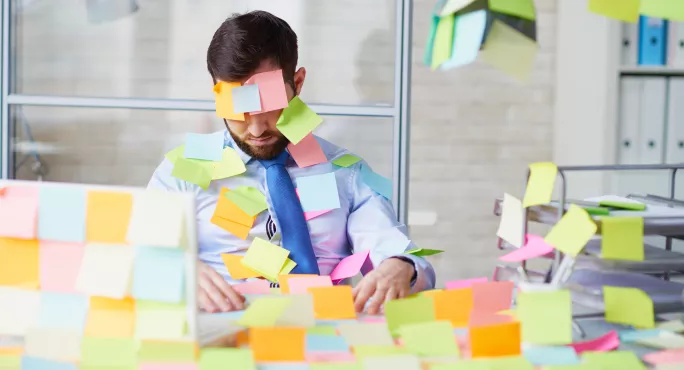- Home
- How to give good feedback from a distance
How to give good feedback from a distance

Statistically speaking, one of the most time-consuming jobs for teachers is marking books and feeding back on student work.
Although a lot of schools are moving away from draconian long marking, teachers still feel the burden of marking policies that are based on image and not mindful of impact and workload.
But as we begin to adjust to distance learning, existing marking policies, draconian or otherwise, have been thrown out of the window.
Schools are now setting all kinds of different types of work using different platforms. For some subjects, these platforms include effective automated marking and feedback, but for other subjects, such facilities are not available.
This can leave teachers in a quandary, especially if leadership guidance isn’t clear on expectations around feedback at this time.
Although teaching from a distance creates a distinct barrier between teacher and student, we can still apply good feedback working practices and keep the workload relatively light while still being effective.
Interaction
Interacting with students can be difficult when distance working. To overcome this, try to use the systems available to ask questions and make sure you plan them effectively.
Simply asking students to complete a piece of work and then writing down one question they would like to have answered means you build up an element of self-efficacy and also have an opportunity to respond to individual issues.
The response is, of course, the time-consuming bit. Typing an answer may not be your preference, so you could narrate one on an audio file, or host a live chat online at a set time.
Keep your feedback concise, specific to the task and, most importantly, within a timeframe that you set. Communicate this to the students so they know what they’ll get back, how and when. From an engagement perspective, this is vital. The second students think their work will go unchecked, their engagement will plummet.
Whole-class feedback
Regardless of how you collate the work from your class or classes, it is how you communicate back to them that is important. Individual comments can be difficult in some subjects and take a lot of time. I am a huge proponent of whole-class feedback.
In terms of impact and time ratio, this approach remains a really effective way of helping students overcome misconceptions, even at a distance.
As always, the key is the framing of the feedback. Explicitly state the issues and misconceptions that have arisen from the task, give the solution - this may come in the form of a PowerPoint presentation, audio recording, worked example or video (or a combination) - and then give students a chance to apply this knowledge. You can provide answers for students to self-reflect on their progress with ease.
Again, distance adds in extra workload here and may make things a bit bumpier, but although you lose some efficiency, the approach ensures that it is less likely that misconceptions become embedded.
Quizzes and low-stakes testing
Although I use a lot of low-stakes testing and quizzes in lessons to check for knowledge retention, I tend to do this kind of retrieval practice through questioning in less explicit ways.
The distinct advantages that quizzes and low-stakes testing allow for is quick (instant) checking for understanding. Making quizzes explicit is easier than you may think. There are loads of free quizzing platforms, such as Quizlet, that also yield data for you from the responses of students. This can then effectively inform the work you are setting and which students are most in need of intervention.
Setting up quizzes can take time, of course (generic quizzes often lack the specific questions on the work you may have set) but the time investment is worth it. These resources will also be available for the next cohort and the next, plus you will have a strong bank of revision resources for next year.
Modelled responses
I know it’s not strictly feedback, but don’t underestimate modelling as a good distance feedback method.
Armed with just a visualiser (even a camera on a stick will do), you can unlock a task for students to help them overcome misconceptions. The concept of screen casting and talking students through steps in the work they have completed has been around for years, but may not be something you’ve dabbled in.
It’s surprisingly easy and what’s more, it really helps you with your live modelling for when you get back to teaching.
I like recording a PowerPoint presentation and talking over it while I type a response. I give a commentary on what I’m doing and why, the same kind of thing as I’d do if the class were there.
The only difference is that they can’t ask questions. I feel this is negated slightly as they can rewind the recording, something they can’t do when it’s live.
Feedback from a distance may take more time, but it will inform your teaching of these topics next time and will be recorded, so may be relevant for your classes in the same form, or as “common mistakes that you should avoid” material.
Adam Riches is an assistant principal and senior leader for teaching and learning, specialist leader in education and head of English. He tweets @TeachMrRiches
Register with Tes and you can read two free articles every month plus you'll have access to our range of award-winning newsletters.
Keep reading with our special offer!
You’ve reached your limit of free articles this month.
- Unlimited access to all Tes magazine content
- Save your favourite articles and gift them to your colleagues
- Exclusive subscriber-only stories
- Over 200,000 archived articles
- Unlimited access to all Tes magazine content
- Save your favourite articles and gift them to your colleagues
- Exclusive subscriber-only stories
- Over 200,000 archived articles



